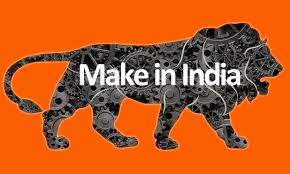–Brian Pereira
Mumbai – As the curtains come down on the Government’s elaborate ‘Make in India’ week today in Mumbai, I’d like to share a few thoughts.
While ‘Make in India’ (and other initiatives by the Modi government), are a welcome change, it would take a lot more than clever marketing and PR and events to actually make it happen.
Yes, Make in India will create new jobs and attract foreign investment. But ask any MNC if they are comfortable investing here, and you’ll get mixed responses.
So the pertinent question is: ‘Why is it so difficult to do business in India?”
India has 1.3 billion people and is a Federal Parliamentary Republic. It is a democratic nation. No single political party has a majority in government, and so the nation is ruled by an alliance of 13 political parties, collectively called the NDA (national democratic alliance), and fronted by the Bharatiya Janata Party (BJP). Each of India’s 29 states is governed by a different political party.
Because of its history, its government administration is highly bureaucratic.
Much of India’s population is poor, and struggles with the basic amenities. So the government is also trying to address challenges like poverty, unemployment, healthcare, sanitation and education. A population of 1.3 billion is more than that of many developed countries.
If you interpret all this data carefully, the big picture emerges.
The government is slow to make decisions, and its various administrative departments are not in sync with each other. The recent incident of Vodafone being slapped with a tax notice from the Income Tax department, the same week that prime minster Modi announced tax concessions for foreign investors, is proof of that.
There are too many people and too many departments involved in decision making. In that sense, India is over-democratised. India is also very diverse with many cultures, religions, castes, and political parties. Some political parties and elements take advantage of this diversity to create discord and disagreement. That also explains why strikes are so frequent in India.
I know Mr. Modi is doing all he can to change all this, and has already achieved a lot in the first two years of his party’s rule. For instance, entrepreneurs who are setting up a business must file only one form now, and not eight, to get a Director Identification number (DIN). The new form, called INC-29, will be available on the MCA website.
In the Ease of Doing Business survey, the country was ranked 142 among 189 economies by the World Bank in 2015, down two notches from the preceding year.
But India still has a long way to go in improving investor confidence.
Too many people and too many bureaus are involved in decision making. And each state has its own policy. The states are not in sync with each other. At the centre, the ruling NDA government itself must appease all the 13 parties in the alliance before taking a decision. There are 30+ political parties in India, so there will always be opposition to decisions and bills, even though they are for the good of the people.
I’m no expert in politics, but from everything I read, this is my view of the situation in India. I can sympathise with the youth in India who are “fed up” with this situation — many of them move out of the country for better opportunities.
My dream and hope is for India to think as ONE and to put aside its differences in religion, caste or politics.
And this is a huge task for Modi and his government to achieve.
———————————————————————————————










